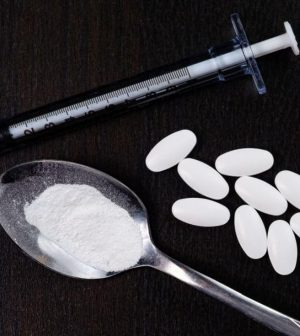- Skip Storing This Everyday Product in the Fridge Door
- Green Tea + B3 Pairing May Boost Brain Health
- Navigating Your Midlife Crisis: Embracing New Possibilities
- City Raccoons Showing Signs of Domestication
- Mapping the Exposome: Science Broadens Focus to Environmental Disease Triggers
- One Week Less on Social Media Linked to Better Mental Health
- Your Brain Changes in Stages as You Age, Study Finds
- Some Suicide Victims Show No Typical Warning Signs, Study Finds
- ByHeart Formula Faces Lawsuits After Babies Sickened With Botulism
- Switch to Vegan Diet Could Cut Your Greenhouse Gas Emissions in Half
Big Drop Seen in Drug Treatment Admissions During Pandemic

MONDAY, Sept. 26, 2022 (HealthDay News) – Admissions to drug treatment programs declined sharply during the pandemic’s first year, likely explaining a later surge in fatal overdoses.
Among people of color, admissions dropped nearly 25%, a RAND Corp. study found.
This is one possible reason for the recent surge in drug overdose deaths, according to the nonprofit research organization.
“These declines in the number of Americans receiving treatment are especially noteworthy given evidence of increases in substance use disorder and overdose death rates during the same time period,” said study author Jonathan Cantor, a policy researcher at RAND.
For the study, his team looked at admissions for substance use disorder treatment between 2017 and 2019, the years just before the pandemic, and during 2020, when it began.
The admissions data is reported by state agencies based on information from facilities that receive government funding.
Before 2020, admissions to treatment programs were stable. They then declined from 66 per 10,000 in 2019 to 50 per 10,000 in 2020, a 24% drop, in states where data was available.
A gender gap was also evident, with admissions of men falling from 88 per 10,000 to 67 per 10,000. For women, the drop was 45 per 10,000 to 35 per 10,000.
The team also looked closely at the experiences of various racial and ethnic groups. Each group studied had a drop-off in treatment admissions. For Native Americans, the rate fell from 145 per 10,000 before the pandemic to 83 per 10,000 in 2020.
For Blacks, numbers dropped from 83 to 63 per 10,000. In Hispanic people, they went from 55 to 41 per 10,000. Admissions of White people fell from 54 to 43 per 10,000, and those of Asian individuals fell from 10 to 7 per 10,000.
Declines were steepest in New Mexico (61%); Hawaii (55%); Washington, D.C. (45%); Nevada (42%); and West Virginia (33%).
Admissions to treatment rose in just three states: Rhode Island, Louisiana and Mississippi.
Idaho, Oregon, Maryland, Vermont and Washington were not included because there was insufficient data in those states.
Researchers said further study is needed to understand possible reasons for the differences, including the impact of bans on elective procedures and shelter-in-place policies.
JAMA Network Open published the findings on Sept. 22.
More information
The U.S. Centers for Disease Control and Prevention has information on the opioid epidemic.
SOURCE: RAND Corp., news release, Sept. 22, 2022
Source: HealthDay
Copyright © 2025 HealthDay. All rights reserved.










